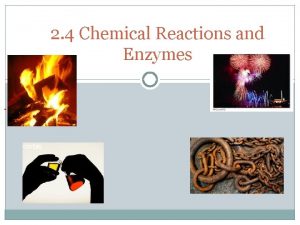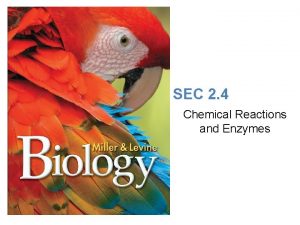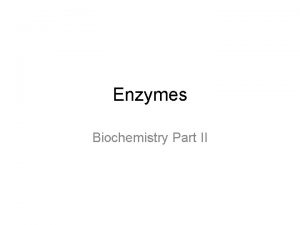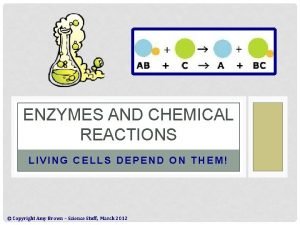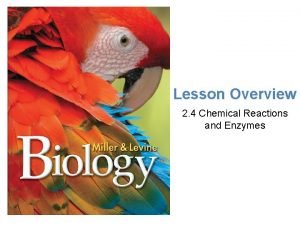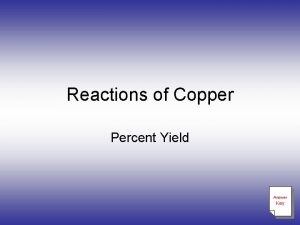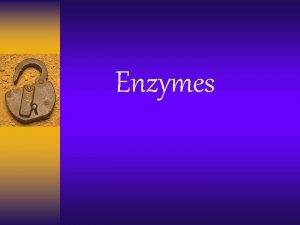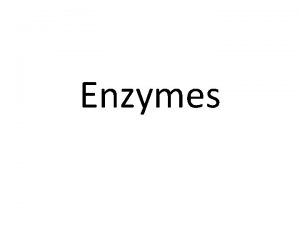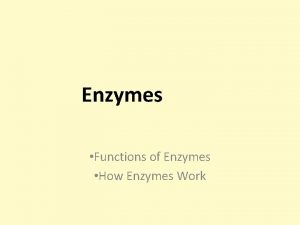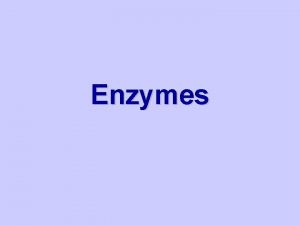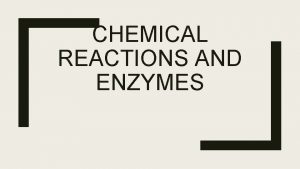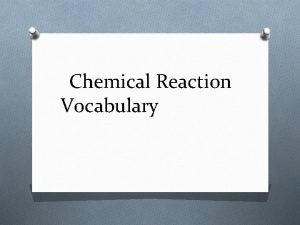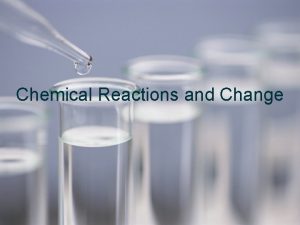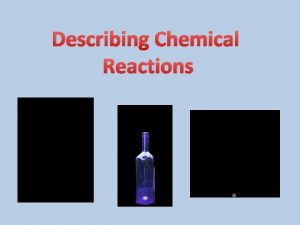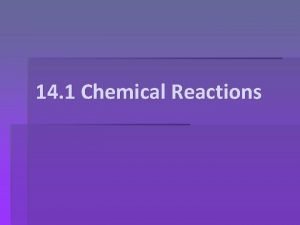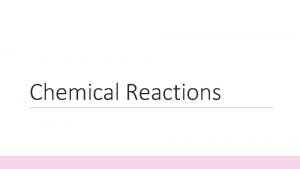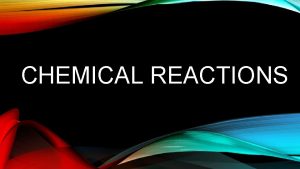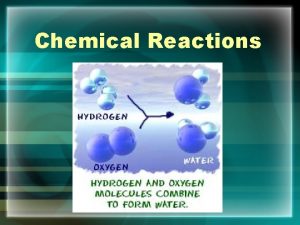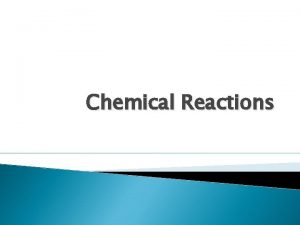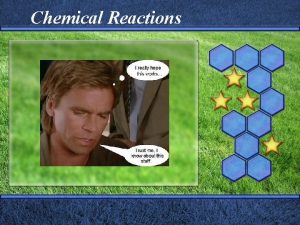Chemical Reactions And Enzymes A chemical reaction is






















- Slides: 22

Chemical Reactions And Enzymes

A chemical reaction is a process that changes, or transforms, one set of chemicals into another. • Mass and energy are conserved • Reactants become products • Always involve changes in the chemical bonds that join the atoms of the compounds


Because atoms are neither created nor destroyed in a reaction, a chemical equation must have an equal number of atoms of each element on each side of the arrow (i. e. the equation is said to be 'balanced').

ØSteps involved in writing a 'balanced' equation for a chemical reaction: 1. Experimentally determine reactants and products 2. Write 'un-balanced' equation using formulas of reactants and products 3. Write 'balanced' equation by determining coefficients that provide equal numbers of each type of atom on each side of the equation (generally, whole number values)

Note! Subscripts should never be changed when trying to balance a chemical equation. Changing a subscript changes the actual identity of a product or reactant. Balancing a chemical equation only involves changing the relative amounts of each product or reactant.

__CO 2 +__H 2 O C 6 H 12 O 6 + __O 2

6 CO 2 +__H 2 O C 6 H 12 O 6 + __O 2 6 carbons in glucose on the right means you need 6 on the left so place the coefficient 6 in front of the carbon dioxide

6 CO 2 + 6 H 2 O C 6 H 12 O 6 + __O 2 12 hydrogen in the glucose on the right means you must have 12 on the left. Since the hydrogen in water occurs in pairs, you will need 6 pairs to equal 12.

6 CO 2 + 6 H 2 O C 6 H 12 O 6 + 6 O 2 There are 18 oxygen atoms in the reactants on the left (12 in carbon dioxide and 6 in water) so you need 18 on the right. There already 6 present in the glucose so you will need 6 pair (12) of the oxygen

6 CO 2 + 6 H 2 O C 6 H 12 O 6 + 6 O 2 This is a balanced equation!

Try this one:

Is this your result?

Energy • Exothermic reactions (release energy) occur spontaneously and give off heat, light, and/or sound energy • Endothermic reactions (absorb energy) need a source of energy and store it in the bonds • Organisms get energy from nutrients

Activation Energy • energy that must be added to get a reaction started, which is recovered as the reaction proceeds • difference in energy between reactants and products • energy that is lost as heat • free energy • equal to the entropy times the absolute temperature

Graphing it……

Enzymes • Catalyst (controls rate of reaction) that lowers activation energy • Specialized protein molecules • Useful in organisms

See what enzymes do…. . ?

Enzymes provide a place where reactants can be brought together, reducing the energy needs for the reaction. Watch the substrates come into the active site of the enzyme model below:

Enzymes must be regulated by the cell to make them able to adjust to changes in the environment

Explanation?

 Section 2 classifying chemical reactions
Section 2 classifying chemical reactions Section 2 classifying chemical reactions worksheet answers
Section 2 classifying chemical reactions worksheet answers Section 2-4 chemical reactions and enzymes
Section 2-4 chemical reactions and enzymes What is released or absorbed whenever chemical
What is released or absorbed whenever chemical Section 2-4 chemical reactions and enzymes
Section 2-4 chemical reactions and enzymes Biology-roots.com
Biology-roots.com Difference between enzyme and protein
Difference between enzyme and protein Types of reactions
Types of reactions Neutron emission
Neutron emission Chemical reactions section 1 chemical changes
Chemical reactions section 1 chemical changes Are kc and kp equal
Are kc and kp equal How to write redox half reactions
How to write redox half reactions Chemistry unit 5 reactions balancing reactions worksheet
Chemistry unit 5 reactions balancing reactions worksheet Chemical nature of enzymes
Chemical nature of enzymes Reactants and products
Reactants and products Chemical equations and reactions chapter 8 review
Chemical equations and reactions chapter 8 review Chapter 8 section 1 chemical equations and reactions
Chapter 8 section 1 chemical equations and reactions Chapter 8 review chemical equations and reactions
Chapter 8 review chemical equations and reactions Examples of chemical change
Examples of chemical change Types of chemical reactions and solution stoichiometry
Types of chemical reactions and solution stoichiometry Unit 5 chemical equations and reactions
Unit 5 chemical equations and reactions Types of chemical reactions and solution stoichiometry
Types of chemical reactions and solution stoichiometry Percent yield of copper
Percent yield of copper



